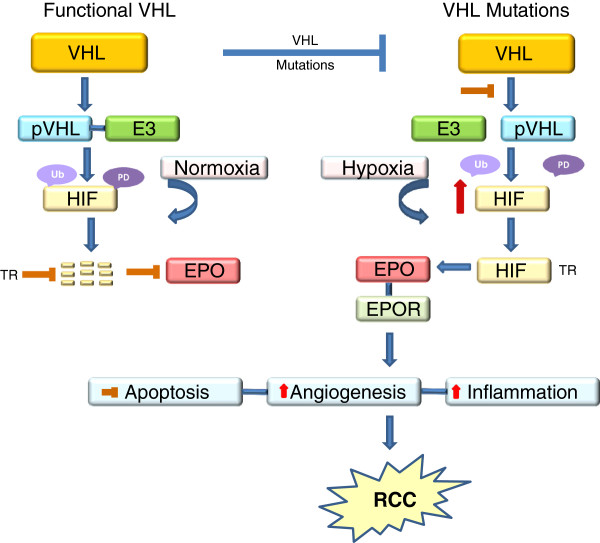Figure 1.
The putative role of VHL-HIF-EPO pathway in RCC progression. A functional VHL gene produces pVHL, which forms a pVHL-E3 ligase complex and mediates the poly ubiquitination (Ub) and proteasomal degradation (PD) of HIF. As a result, the translocation (TR) of HIF to the nucleus and the subsequent transactivation of HIF regulated molecules, including EPO is prevented. When the VHL gene is mutated, the production of pVHL and the formation of the pVHL-E3 ligase complex are either impaired or prevented. Subsequently, HIF is stabilized and up-regulated, and translocated to the nucleus, where it dimerizes with other HIF subunits and transactivates HIF responsive genes including EPO. EPO binds to its receptor EPOR and mediates some of the biological aspects of cancer progression such as increase in angiogenesis and inflammation and decrease in intrinsic and drug-induced apoptosis. Apart from VHL mutations, hypoxia is the single major factor that regulates the production of EPO. In normoxic conditions, the HIF is degraded, whereas in hypoxia, HIF is stabilized and lead leads to the activation of EPO.

